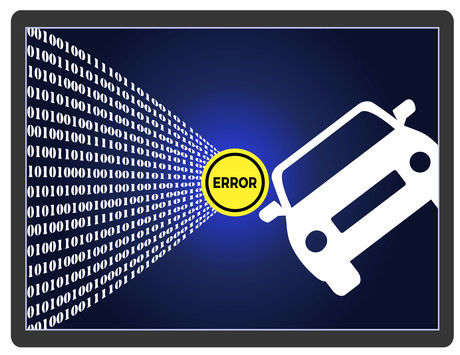Addressing data overload in driverless cars

EnSilica, a UK provider of IC design services, has announced an award-winning innovation that is expected to accelerate the commercialisation of autonomous vehicles. Its eSi-ADAS RADAR Imaging Co-processor will solve the problem of radar data overload and resolution by handling this in a dedicated co-processor, enabling potentially hundreds of objects to be tracked in real time.
Advanced driver assistance systems (ADAS) are becoming increasingly complex as they advance from their simple origins of cruise control and parking assistance to fully autonomous driving. One of the challenges facing OEMs is that a combination of video, radar and lidar is needed to cover all operational conditions, which is expensive. This is because current radar sensors lack the imaging capability, 3D and 360° coverage that is available from lidar, but lidar does not work well at night or in fog, so the two have to be used in conjunction with video. This creates a problem of large amounts of data that needs to be processed in real time.
“It became clear to us that there is a need for a solution for the autonomous/self-drive car market to effectively handle the huge amount of real-time data needed to provide an accurate picture of the surroundings of the car so that it could drive itself,” said David Doyle, EnSilica’s commercial director. “Also, by improving the resolution of the radar part of the system, the need and cost of the lidar component could potentially be removed, providing significant system cost reduction.”
Increasing the radar resolution would create even more data that uses up most of the capacity of the system’s central processor. EnSilica’s solution was to design a dedicated co-processor that is optimised to handle this particular type of data, with the co-processor chip offloading the radar target tracking from the car’s electronic control unit (ECU) and freeing up ECU resources to concentrate safety critical decisions such as target identification and fusing radar data with camera video information.
EnSilica’s solution has high-resolution image sampling capability, elevation and 360° coverage from multiple sensors, plus it works at night and in any weather conditions. The result is a detailed radar map of the kind needed for future autonomous vehicles that works in conjunction with a video system. The co-processor chip can support up to 256 virtual antennas in a 3D array with ADC sampling rates up to 100 megasamples per second of raw data. This provides coverage for parking and short- and long-range radar in a multimode sensor, removing the need for ultrasonic sensors for parking.
The co-processor has dedicated mathematical hardware engines to demodulate the radar signals using range, doppler, azimuth and elevation fast Fourier transforms, while the resulting measurements are tracked using a high-performance Kalman filter. This means the final output is a low data rate object list with position, speed and confidence values for over 128 objects that can be used by an ECU for sensor fusion with other radar object lists or images. To provide the most precise plot extraction, the product operates in conjunction with modern, fast chip-capable RF devices.
The co-processor’s importance to the industry was recognised at the prestigious TechWorks Awards in November, where it won the Automotive Electronics Innovation & Excellence Award. Benefits are said to include 20x lower power requirements than today’s lower resolution systems and lower system costs, faster precision real-time tracking and an ultralow maximum latency of 20 ms to enable critical safety decisions to be made with confidence.

“This innovation provides a major step forward towards cost-effective, safe, self-drive cars as it provided a dedicated solution to handling the previously almost overwhelming amount of data,” said Dr David Wheeler, EnSilica’s technical director. “With this processing burden offloaded and the provision of almost instant awareness of the surrounding, the self-drive car is now much closer to commercial reality.”
Light reshapes semiconductors for advanced optical devices
Researchers have shown how light reshapes Janus semiconductors at the atomic scale, enabling...
Novel method to grow ultrathin semiconductors on electronics
Researchers have developed a technique that could speed up the development of next-generation...
Blue LEDs developed to enhance display performance
Researchers have developed a new method for manufacturing light-emitting diodes (LEDs) that emit...




